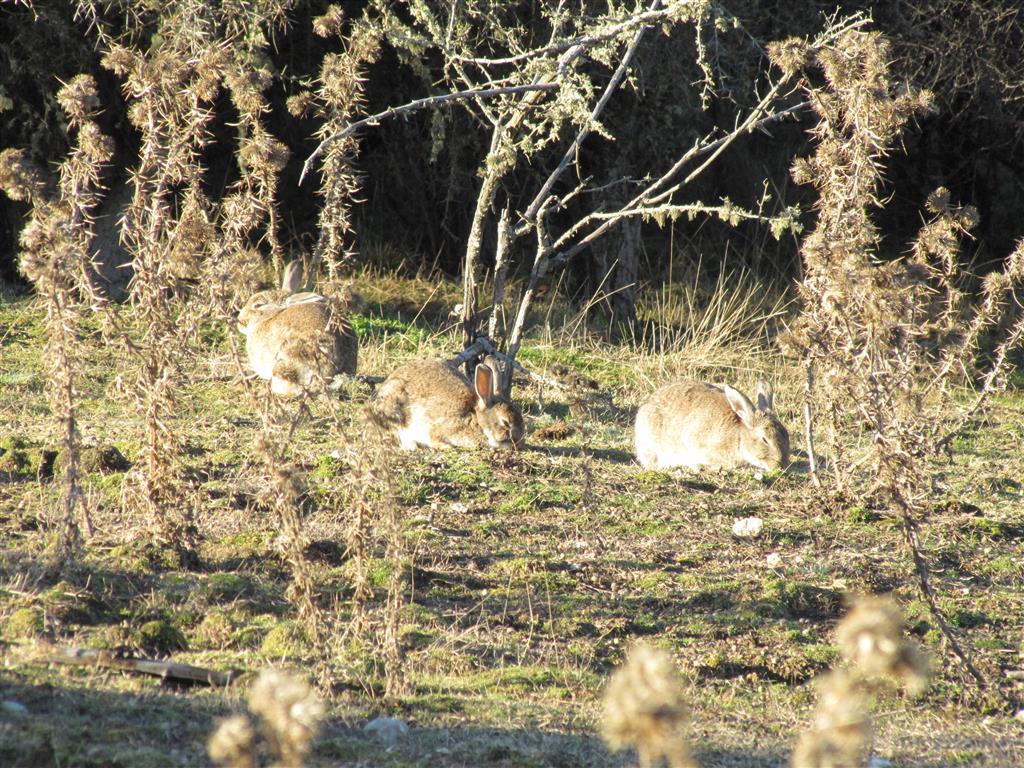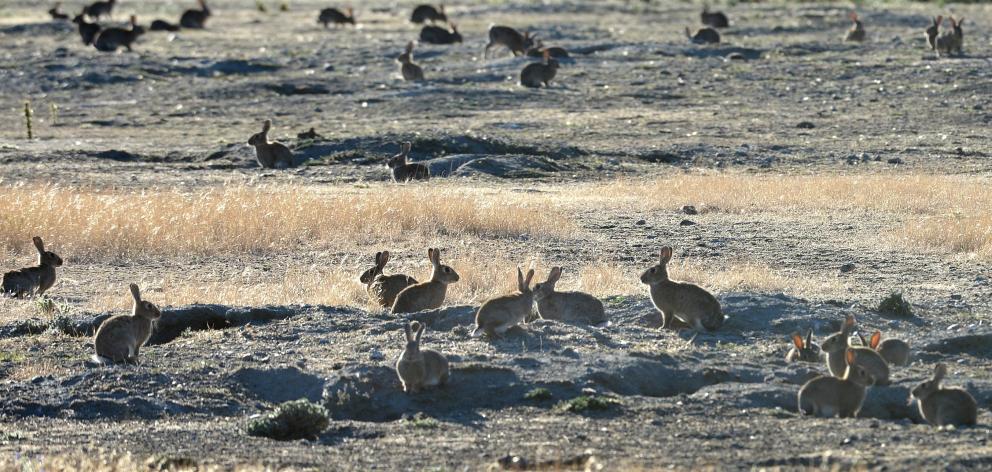
However, while places such as Lowburn are badly affected, Maniototo appears to have avoided the explosion.
Matakanui Station owner Andrew Paterson said a mild winter had encouraged a population boom for rabbits.
‘‘I think it is bordering on an explosion and they are as bad as I have seen them,’’ Mr Paterson said.
‘‘The K5 virus [introduced last year] has had no effect, certainly not on my place, and it was released on my place.’’
Federated Farmers member and sheep and beef farmer Phill Hunt, of Wanaka, said the rabbit population was bad, particularly on public spaces, reserves and walking tracks.
‘‘It is quite noticeable, and even when driving past Doc Wanaka headquarters, there seems to be a lot of rabbits on their lawn,’’ Mr Hunt said.
He carried out significant control work on his land, as did his neighbours, he said.
'‘It seems to be public spaces are the issue.
Farmers did not feel like doing much control work on their land if it was going to be reinfected.
On the other hand, Maniototo Pest Management manager Ossie Brown said rabbit numbers in the Maniototo were ‘‘very good’’ at the moment.

‘‘As far as I am concerned the K5 virus never worked in the Maniototo,’’ he said.
‘‘I have not observed any impact and not seen any dead rabbit as a result.’’
He said he had two staff out shooting most nights and they would average 20 rabbits each, which was low.
The regular night shooting was followed up by helicopter shooting, and both systems had similar costs per hectare.
Farmer Raymond Gunn, of Coal Creek, said rabbit numbers were ‘‘as many as we ever had’’.
He said he carried out night shooting to control numbers but the rabbits came from waste areas, roadsides and riverbanks.
‘‘In the days of the rabbit board, we all paid rabbit board rates and the board managed all those areas.
‘‘Now it is a user-pays system and we deal with them.’’
He said wasteland owners did not appear to be worried about the rabbits on their land.
While he supported the reintroduction of a rabbit board system, or a cooperative similar to the MPM, he did not think it would work in the Teviot Valley.
‘‘I think it works well when there is vast areas of farmland and no waste country.
‘‘We have got lots of small lifestyle block holdings, about 10 large farms, lots of small holdings, riverbanks and council land.’’
Mr Gunn said when the original calicivirus came through his property in the 1990s, it was extremely effective.
‘‘It came to a naive population, which had never experienced it before and went through like wildfire.’’
Now he thinks there may have been some sort of immunity in the populations which impacted the effectiveness of the K5 virus.
Otago Regional CouncilDunstan councillor and farmer Gary Kelliher, of Springvale, said he agreed rabbit numbers had ‘‘exploded’’ throughout the region.
‘‘Our farm was a release site for the K5 virus, but I saw no difference in numbers.
‘‘It has been a failure.’’
But Mr Kelliher said he ‘‘took his hat off’’ to the ORC staff who worked incredibly hard on the virus.
He intends to raise the issue at the next regional council meeting and to explore the possibility of using genetics, or developing a rabbit contraceptive to provide another tool for rabbit control.
Comments
Bring back the Rabbit Boards. Simple. Then lynch every single person who was responsible for shutting them down, and everyone who has advocated for and been responsible for the release of all these viruses.
These people, all of them, need to be held to account and used as an example for others whose ignorance and greed harm the environment. The rabbits were nearly gone, then these morons saved them.















